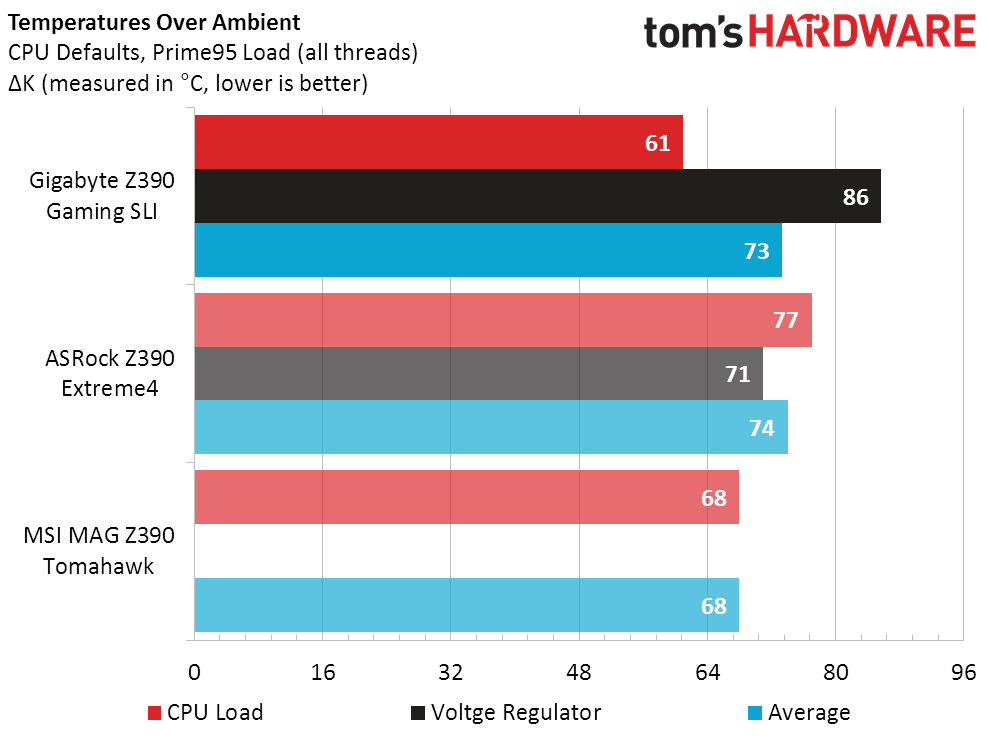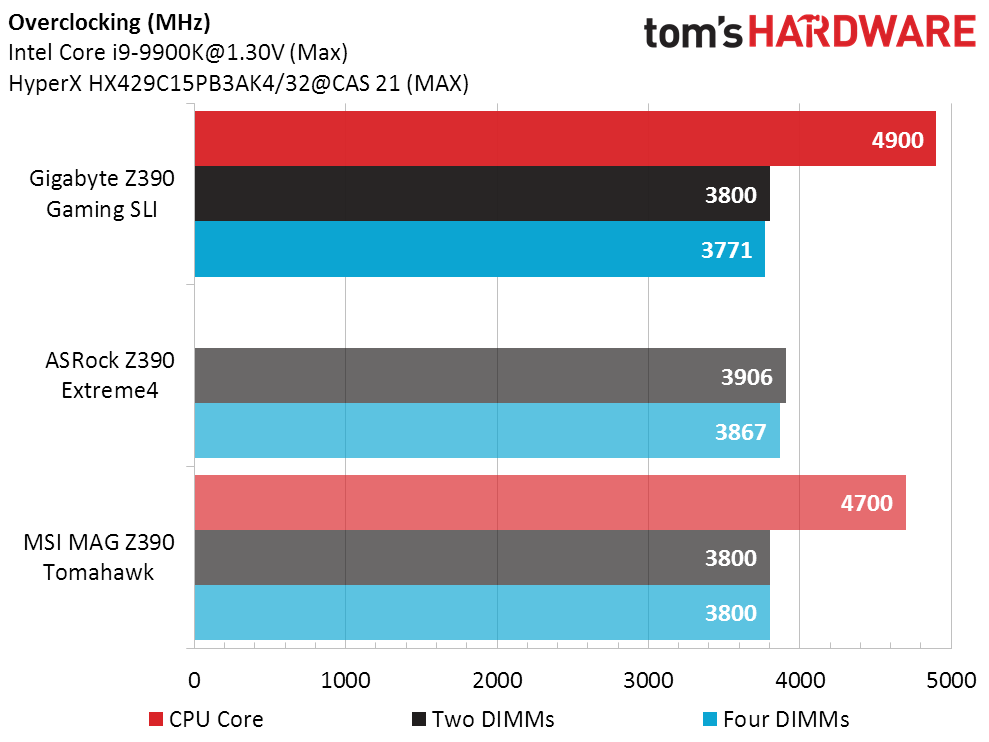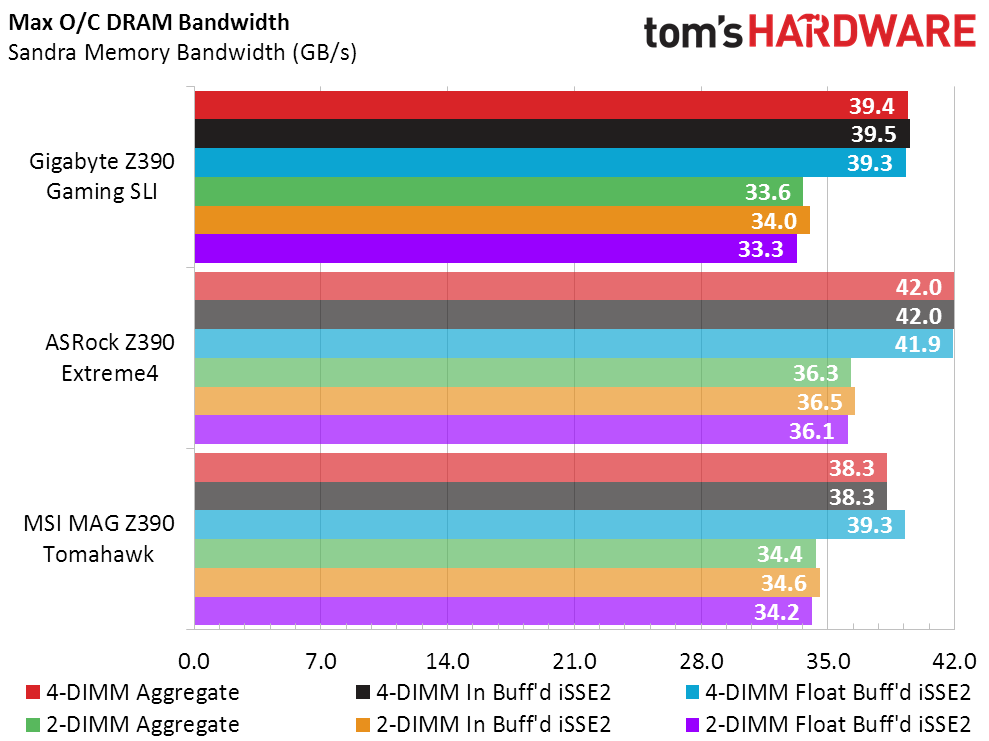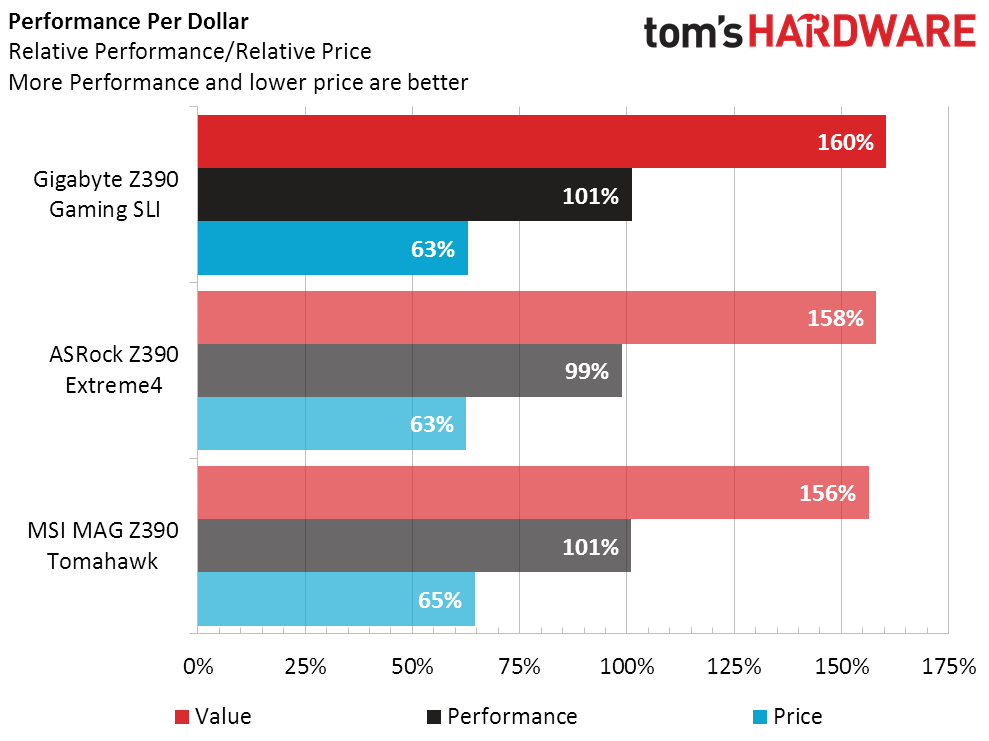Gigabyte Z390 Gaming SLI Motherboard Review: Dollar Stretcher
Why you can trust Tom's Hardware
Benchmark Results and Final Analysis
All standard benchmarks and power tests are performed using the CPU’s stock frequencies (including stock Intel Turbo Boost ratios), with all of its power-saving features enabled, and XMP memory mode disabled. That last setting is a legacy of older boards that occasionally forced a higher all-core Turbo Boost multiplier when XMP was enabled.
Synthetic Benchmarks
Synthetics are a great tool to figure out if a board is running out of spec, as identical settings should produce extremely similar performance results. Advanced memory timings are the one place where motherboard makers can still optimize for either stability or performance though, and those settings also impact Sandra’s bandwidth-intensive Cryptography tests.
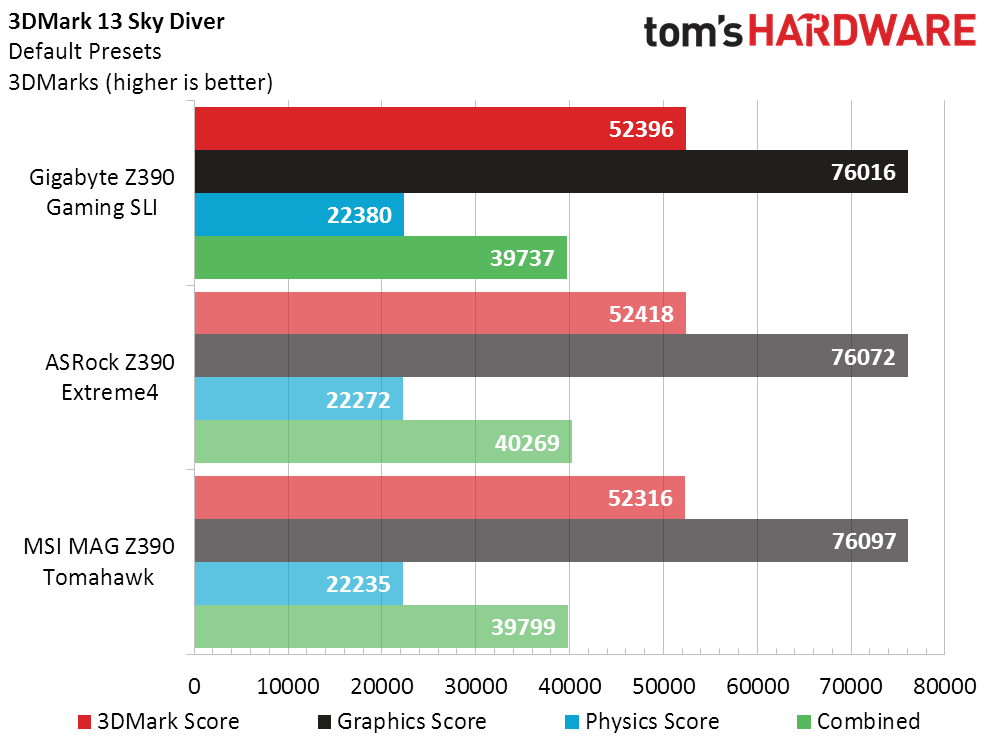

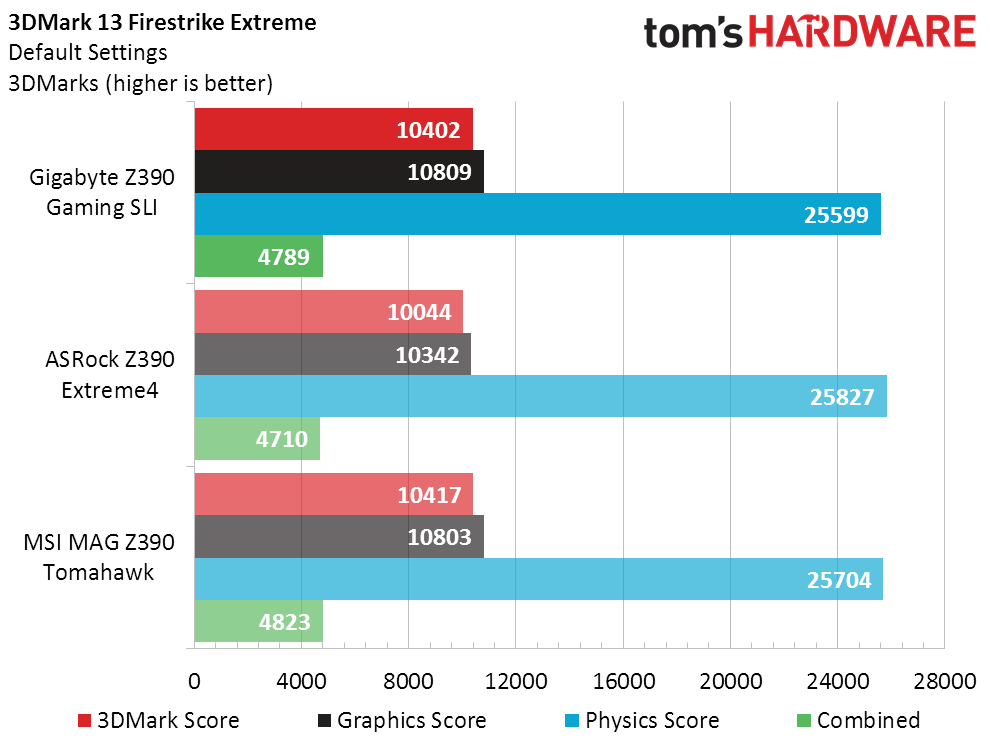

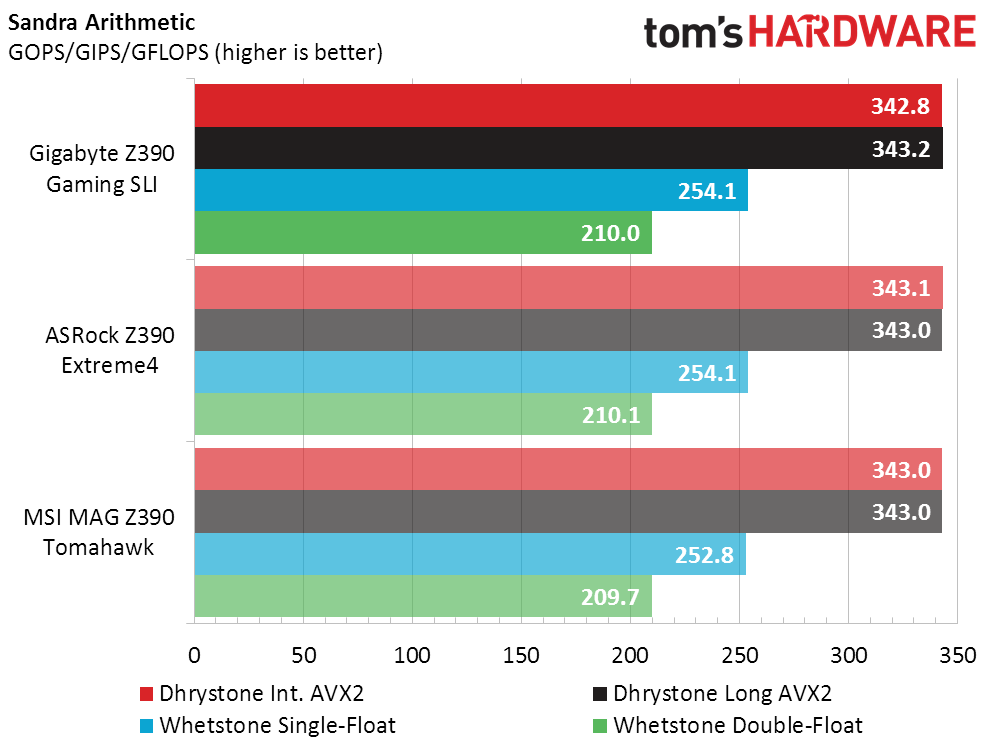
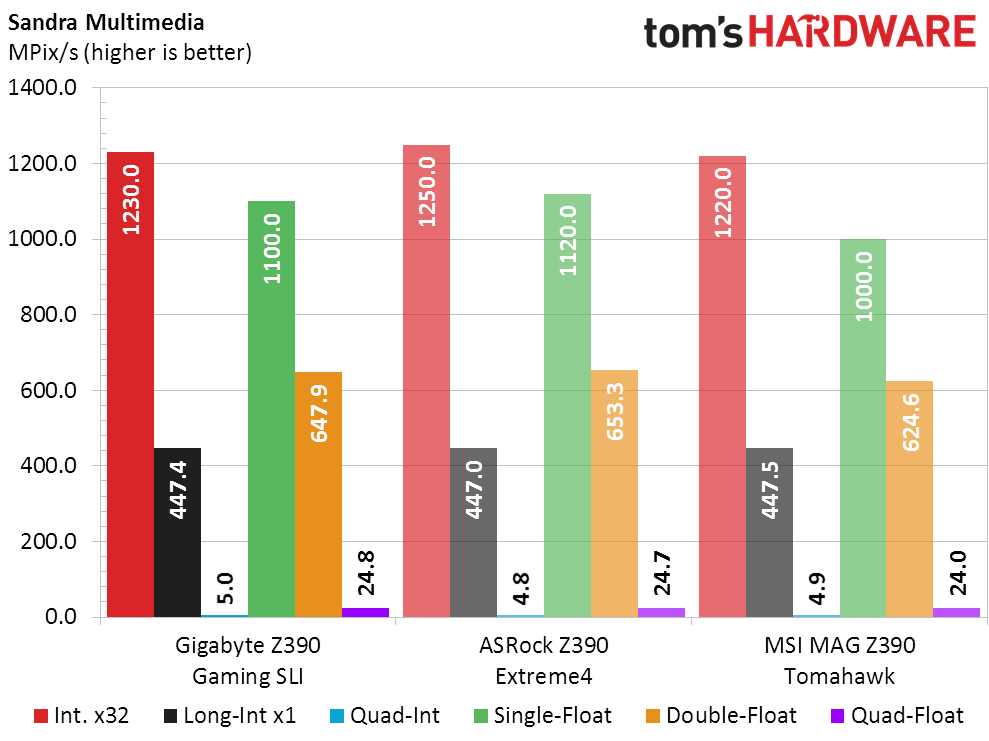


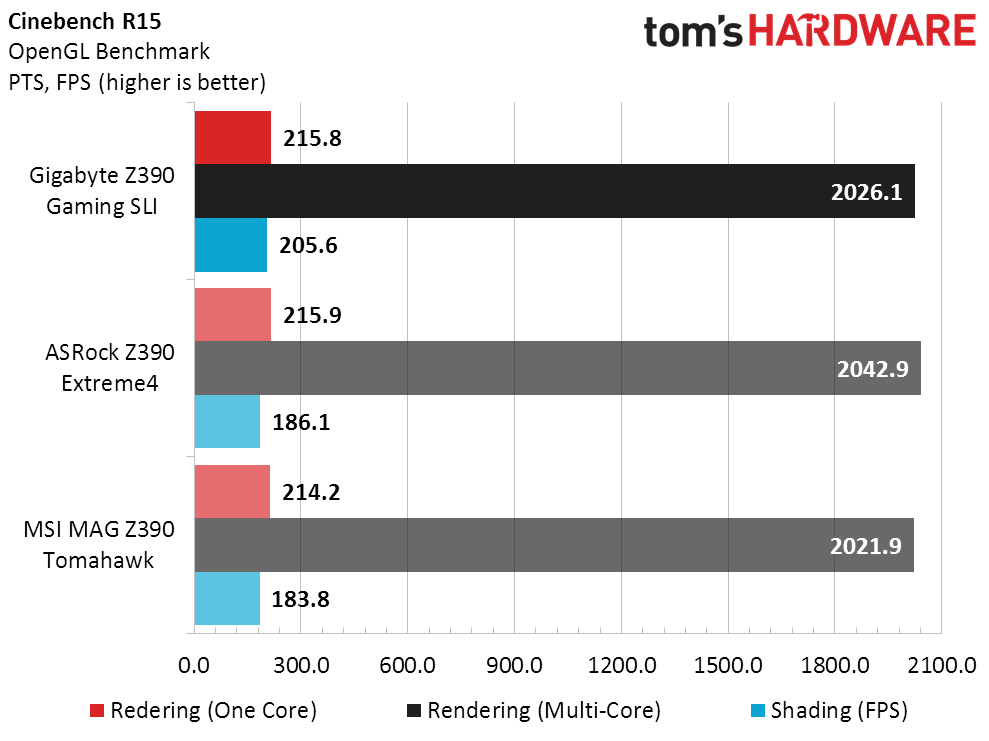

The Z390 Gaming SLI performs very closely to the MSI MAG Z390 Tomahawk in 3DMark, but the Z390 Extreme4 strangely trails in the Graphics score of its Firestrike and Firestrike Extreme tests. It also loses in PCMark’s Creative bench, but appears on-par in every test that wasn’t configured by Futuremark (makers of 3DMark and PCMark).
3D Games



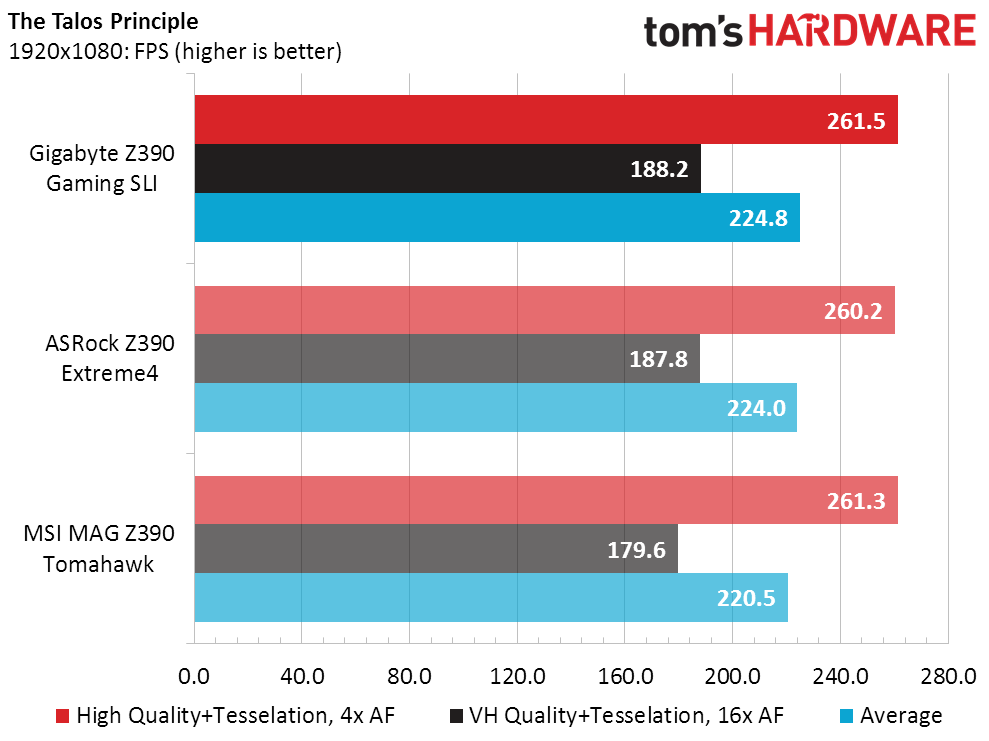
Seeing that the Z390 Gaming SLI matched the MAG Z390 Tomahawk in our first three games, we again looked at the Z390 Extreme4 to see that it led in our lower Ashes of the Singularity test and trailed in our lower F1 2015 test. And just to throw another wrench in our hopes of consistency, the MAG Z390 Tomahawk fell around 4 percent behind at our higherTalos settings.
Timed Applications
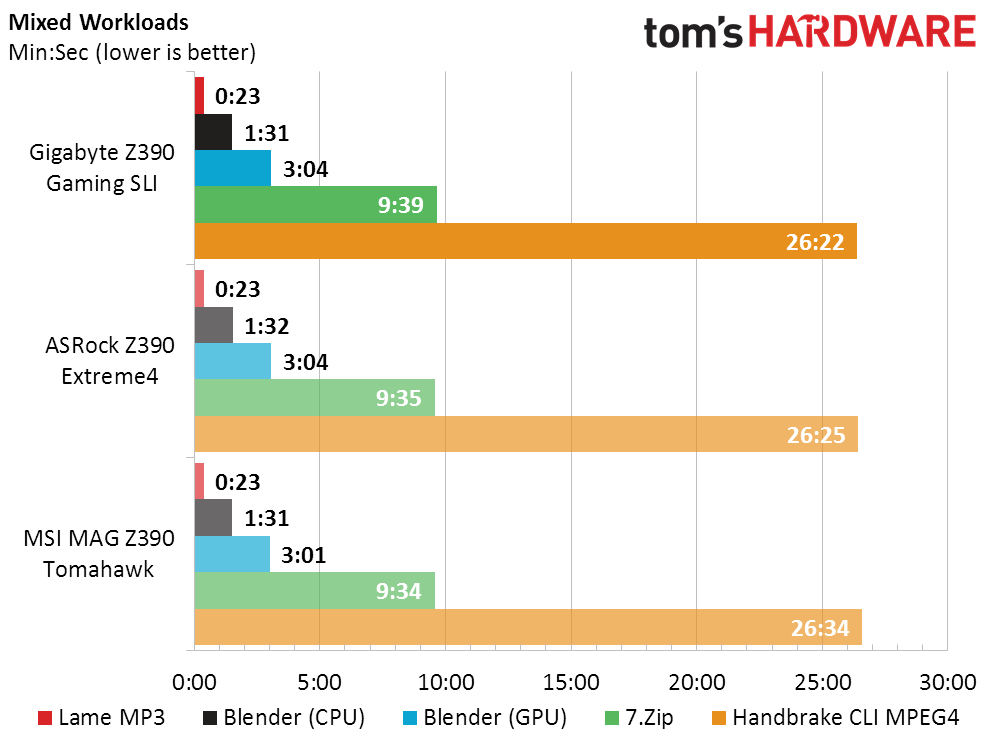
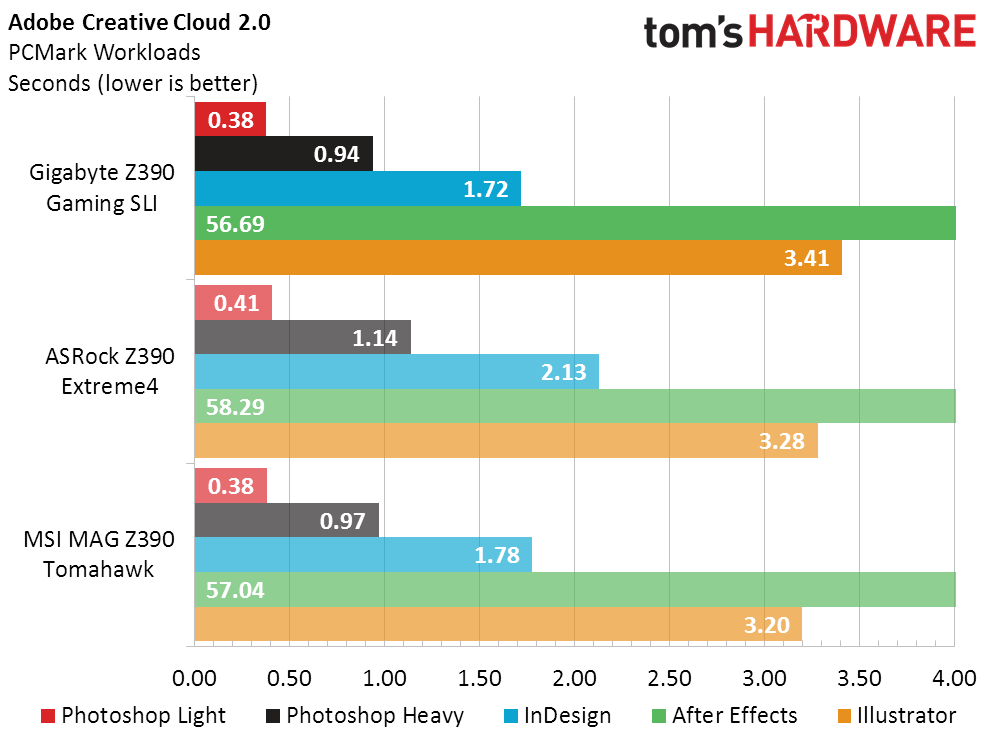
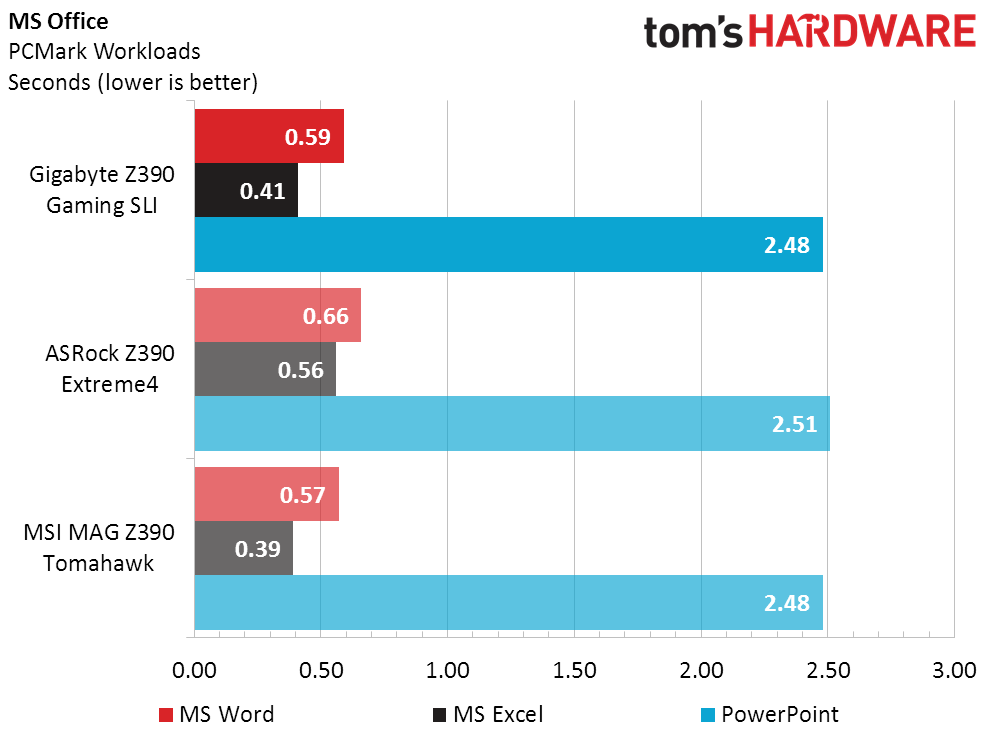
Where more time means less performance, the Z390 Gaming SLI took a slight loss in our Adobe Illustrator test, and the Z390 Extreme4 in our PowerPoint test. Single losses are minimized in our overall performance metric, so let’s see how these board’s did overall.
Power, Heat, & Efficiency
The Z390 Gaming SLI consumed the least power of all three boards at full load, and a quick look at its core voltage under full load showed nothing out of place at around 1.24 to 1.26V and 4.70 GHz. That leaves the voltage regulator as the most-likely culprit for the other board’s losses.
Now we see what appears to be extraordinarily high heat for the Z390 Gaming SLI, but both competing boards required additional voltage regulator cooling beyond our standard test configuration simply to run our Core i9-9900K up to its full thermal reading. At least the Z390 Gaming SLI completed the test without the extra cooling that we normally reserve for our overclocking tests, even though getting that reading required us to drop our lab to a chilly 18 degrees Celsius. For the record, we tried the same thing and more on the competing lower-priced boards, but they couldn’t handle the i9 as well as this Gigabyte board.
Get Tom's Hardware's best news and in-depth reviews, straight to your inbox.
Note that of the sixteen Z390 board’s we’ve reviewed, these three lower-cost models are the only ones we’ve tested to have this voltage regulator heat problem.
Our percent scores are based upon all sixteen tested boards, including the baker’s-dozen of higher-priced models not shown here. The Z390 Gaming SLI’s performance is 1.1 percent better than average, though about one percent of that difference is due to some of the not-shown boards having only two DIMM slots. And its efficiency score is over 3 percent higher than the average of the larger, inclusive set.
Overclocking
The competing ASRock Z390 Extreme4’s hot voltage regulator eventually throttled down our Core i9 CPU at any setting, even after adding an extra fan to its voltage regulator. The MAG Z390 Tomahawk at least allowed our CPU to reach its top eight-core Intel Turbo Boost default, but only after dropping it to a 1.20V fixed core voltage. Of the three sub-$160 boards, only the Z390 Gaming SLI could actually overclock our Core i9-9900K under the full heft of Prime95 small-FFTs.
Performance is the point of overclocking, and the Z390 Gaming SLI crushed its low-cost competitors in the CPU frequency arena. But when it comes to overclocked memory performance, the Z390 Extreme4 took the trophy.
Final Thoughts
Gigabyte’s Z390 Gaming SLI is the only sub-$160 motherboard we’ve tested that could support the full power load of our $520 Core i9-9900K. On the other hand, a representative from one of the competing board makers said that they didn’t think anyone buying a $500 CPU would use a low-priced Z390 board. While that sounds like a reasonable assumption, when we hear a board has a Z-series chipset, we assume support for the full range of Intel’s mainstream-socket processors.
The competing boards have more features to offer: Both have a Type-C port on the I/O panel, which is a nice convenience even if the two 10Gb/s Type-A ports Gigabyte offers have the same bandwidth. ASRock offers two more SATA ports than Gigabyte, while MSI offers one more Gigabit Ethernet port. Both competing boards have a digital optical audio output on the I/O panel as well.
But the percentage of users maxing out their SATA ports on a mainstream build, or using optical audio connectivity is certainly quite low. More importantly, neither competing board could fully support the full range of Intel’s ninth-gen LGA 1151 processors. Only Gigabyte’s Z390 Gaming SLI can do that. And for that, we think it deserves some kind of award.
Would you like to comment on this article? Join the discussion in Tom's Hardware Forums.
Image Credits: Tom's Hardware
MORE: Best Motherboards
MORE: How To Choose A Motherboard
MORE: All Motherboard Content

